| The reason for visiting this area was to go to
the Kennedy Space Centre. It is very expensive and I'm not sure it was
worth it, but at least we can say we've been. And, having been to see
mission control at Houston, it completed the story for us. (We had not
realised before we got here that Cape Canaveral is now something separate,
run by the Air Force, and is used to launch unmanned missions such as
putting satellites up.) This is the assembly building
which was used for earlier mission series although not for Apollo and
Shuttle missions. | 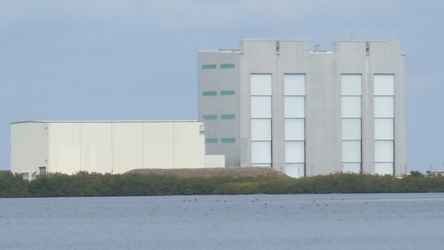 |
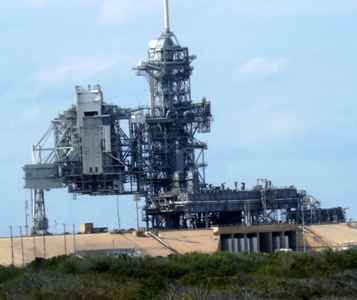 | There are about 15
different launch pads but this is one of the two used for Apollo and
Shuttle missions. This is Pad 39B. The normal tour bus takes you to a
viewing tower
about a mile away but we went on a 'NASA Close Up' tour and so got closer.
It seems amazing that these structures remain standing, and can be re-used
after a launch, because of the high temperatures and volumes of flame and
gas produced each time. This is achieved by having vents underneath which
channel the exhaust away, so the launch pad is actually on a small man-made
hill. |
| The tours are big business, we were in tour bus 41 and we were pretty
much full (everyone was outside looking at Pad 39B when this shot was taken). | 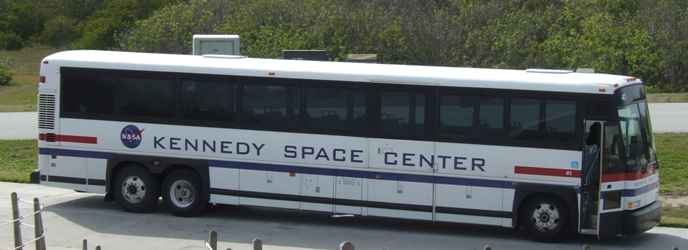 |
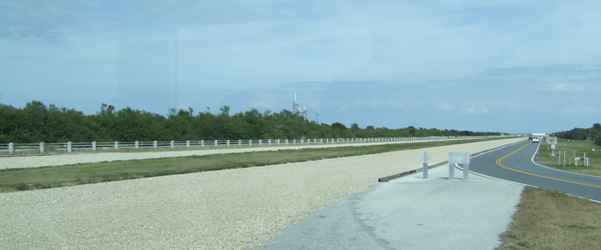 | The 'shuttle'
consists of the re-usable rockets,
the big orange 'one use only' fuel tank and the white orbiter. Once it has been assembled
and is in launch position (ie vertical) on the mobile launch platform, the
whole thing is moved to the launch site
on a crawler vehicle at 0.5 mph. The crawler's roadbed, the gravel 'dual
carriageway' seen here, is seven meters deep and 3.5 miles long, and the
crawler takes up both carriageways. |
| This is the current vehicle assembly building, and it is one of
the largest buildings in the world - the stars bit of the flag is the size
of an American football field. | 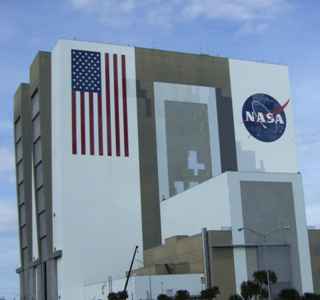 |
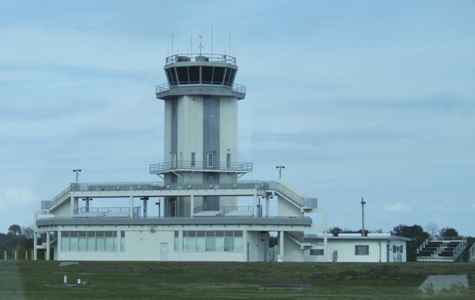 | There is a 3 mile
runway here used as an alternate landing site for the orbiter in case the
weather is bad in the west (normally
they land at Edwards Air Force Base in Texas) and for bringing in parts and personnel. They do fly the
orbiters
back here from Texas on top of a modified 747. This is the control tower. |
| Although mission control is at Houston, launch control is here at
Kennedy Space Centre. This is the Apollo launch control room, now used as an
audio visual display
for tourists. Although this was state of the art at the time, it all now
looks quite dated. | 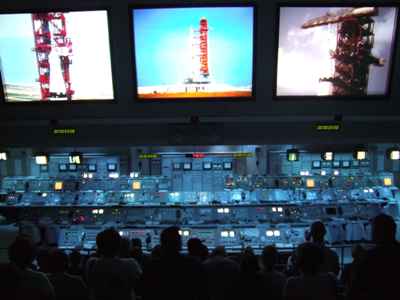 |
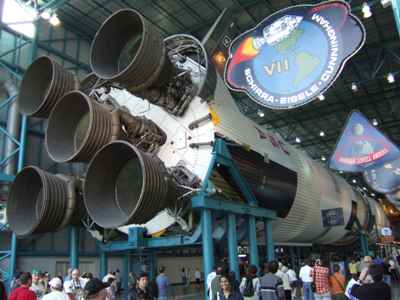 | On to the Saturn
display hall where they have a Saturn rocket and all the other elements of
the Apollo moon missions. This is the business end producing 7.5 million
pounds of thrust. |
| It looks impressive even if the numbers associated with it
don't have much reality for normal mortals. | 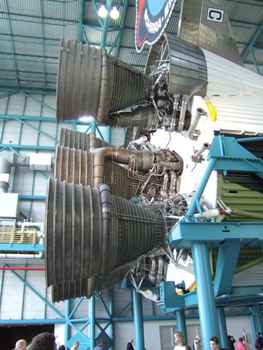 |
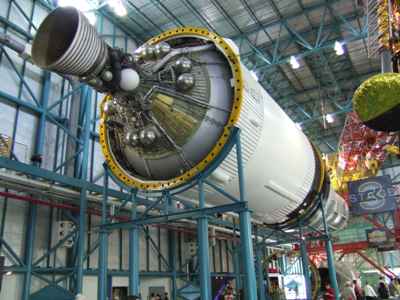 | The first stage
only lasts for a couple of minutes before the second stage takes over. Most
of the space inside is fuel tank. The fuel is highly corrosive and very
explosive. |
| The mammoth first stage fuel tank . | 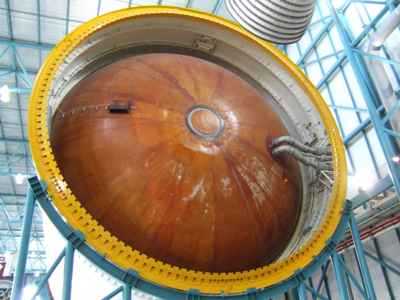 |
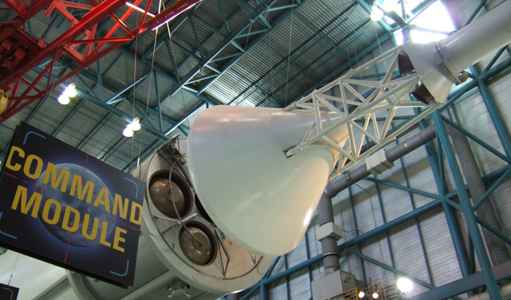 | All to put this
itty bitty capsule up there with three men inside. Hardly seems worth it. |
| This is a lunar lander. It really looks like something out of
Blue Peter but with gold coloured foil instead of aluminium. | 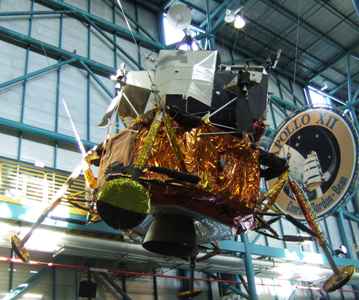 |
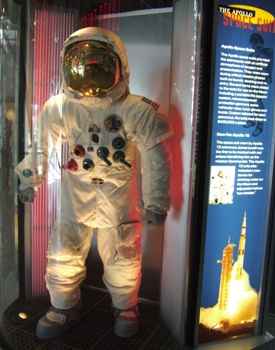 | A space suit with
all its various connectors. Almost every mission had a different design. |
| Inside a capsule showing some of the control panels. Hard to
imagine they fitted three people in here as well.. | 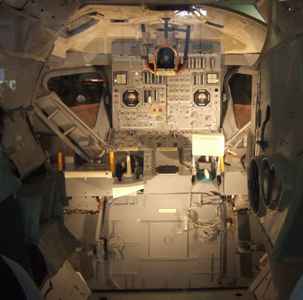 |
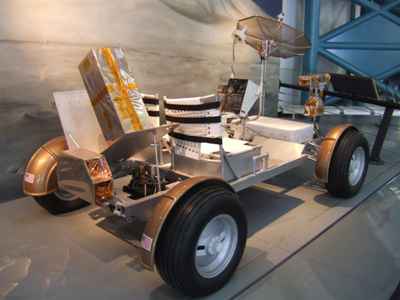 | A lunar rover. It
has four wheel steering and seatbelts but is otherwise quite fragile. |
| This is a model of the Spacelab, a precursor to the space
station now being built. The shot of that didn't come out so well. The
background was too cluttered. | 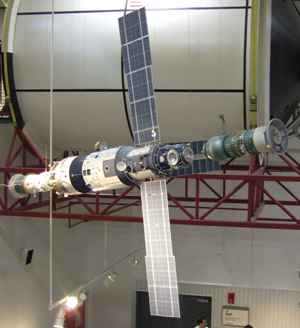 |
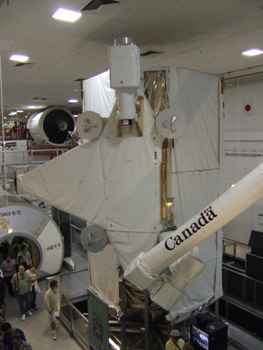 | The
space station is being built by 16 different countries. Here they test that
all the bits fit and work together. Canada built the lifting boom. |
| This section is Italian and so has an Italian name. There is
less indication about exactly what it's function will be when it gets up
there. | 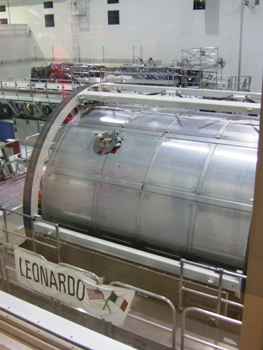 |
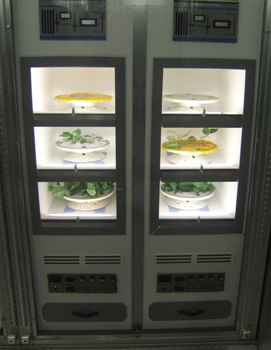 | Although we did get
to see some bits. Here they will grow plants in weightless conditions. One
of the spin-offs from this will be the ability to feed the astronauts on long
missions to Mars, etc (currently planned for 2018?). |
| Outside is a display of old rocket technology showing how they
have increased in size over the years. This is a Saturn and is too large to
stand upright unsupported for long. | 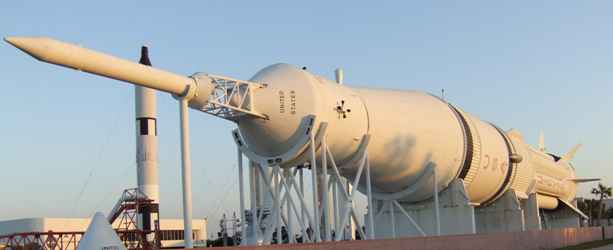 |
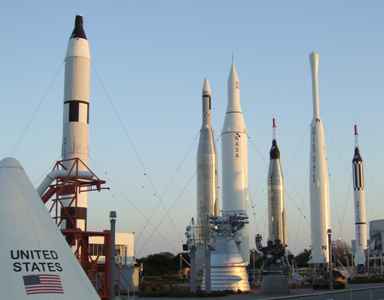 | They really have used
quite a variety over the years. Only some have supported men, others boost
satellites and weather stations into orbit. |
| And dusk settled on what was quite a long day. There is a lot to
see, even if a lot of it is film in the IMAX theatres. Our tickets would
have allowed us to come back the following day, but we thought we'd seen all
the interesting bits. | 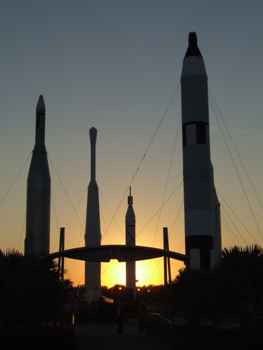 |
|